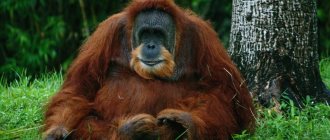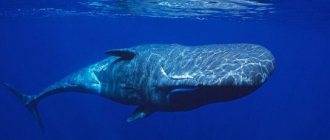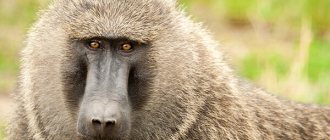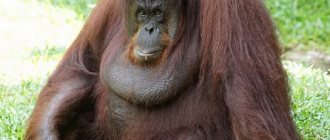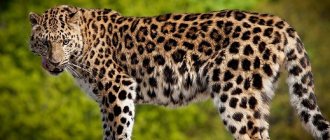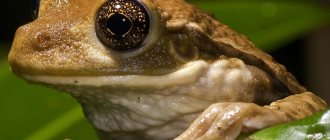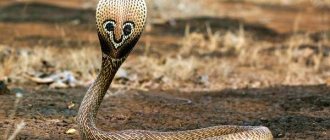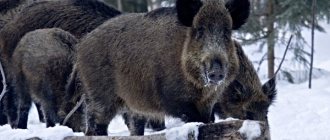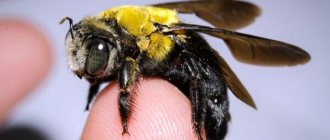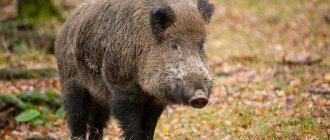Peccaries are considered amazing animals that previously belonged to the Pig family. Translated, artiodactyl mammals mean “an animal making a road in the forest.” The most common habitats of animals are the territories of the New World and Western Europe. Bakers have many similarities with pigs, not only in appearance, but also in character, habits, and other characteristics.
Description of bakers
Peccaries are small animals with a body length of up to a meter and a height at the withers of no more than 55-57 cm . The average weight of an adult animal is 28-30 kg. All bakers are characterized by the presence of a wedge-shaped, somewhat heavy head on a short neck. The animal has a straight profile and an elongated snout, small eyes and neat rounded ears. The baker's legs are thin and short.
This is interesting! In America, the baker received the nickname “musk pig”, which is due to the specific and unpleasant smell of the secretion secreted by a special gland located in the lower back, next to the tail.
The body type is lightweight, with a fairly short tail and a slightly hanging back. The baker's body is completely covered with very thick stubble, which is much longer at the withers and in the back area, so it resembles a kind of mane. At the stage of excitement, such a mane easily rises, which exposes a gland that sprays a persistent and very “odorous” secretion.
Appearance
Peccaries have a number of significant differences from pigs, which allows them to be classified as ruminant ungulates:
- division of the stomach into three sections with a pair of blind sausage-shaped pouches;
- the presence of three fingers on the hind limbs;
- downward-pointing upper triangular canines;
- presence of 38 teeth;
- two pairs of mammary glands.
Using a special musk-like secretion, adult peccaries mark their territory by spraying a strong-smelling liquid onto bushes, grass or rocks.
Character and lifestyle
Non-ruminant artiodactyl mammals, settled over a fairly wide area, are accustomed to different habitats and feel absolutely equally comfortable not only in rain forests, but also in desert areas. White-bearded peccaries are most often found in arid wooded areas, and such animals use large boulders or limestone caves as shelter from enemies.
It’s difficult to call bakers sedentary. Mammals in search of a new place of food are able to migrate from one territory to another. As a rule, bakers stay in one place for a day. Artiodactyl animals live in herds, the total number of which is often two hundred individuals. The head of such a large community is the oldest and most experienced female leader.
This is interesting! Peccaries are active mainly in the dark, but even during the daytime such mammals are often awake, resting on their beds.
Thanks to the large concentration of individuals in a herd, animals are able to successfully protect not only themselves, but also their offspring from enemies . If non-ruminant artiodactyl mammals are threatened by predators, then all adult members of the herd typically line up in a powerful defensive line. Regardless of age, peccaries love to bathe in dirt or dust, but they always defecate only in places specially designated for this purpose.
How long do bakers live?
Despite the fairly high mortality rates of peccaries in nature, the life expectancy of such an animal in captivity often reaches 22-24 years.
Sexual dimorphism
Males and females of many species of animals differ greatly in appearance or structural features, but peccaries do not belong to this category. A distinctive feature of bakers is the complete absence of signs of sexual dimorphism. However, the “pigs” themselves are quite capable of distinguishing each other by gender.
Return to content
History of the name
Summarizing the story about these amazing animals, unfamiliar to humans, it is necessary to mention the history of the name peccary pig, why they were called that no less interesting than they themselves.
When European pioneers explored the American continent, they encountered a fairly friendly and friendly Tupi Indian tribe, whose descendants still live in modern Brazil.
Seeing a group of unusual animals in the distance, the Portuguese began to point at them, shouting Pigs, wild pigs, and the Indians picked up the word, which sounded to the ears of Europeans like Peccaries.
After some time, it became known that peccary was not one word, but several, and this phrase is translated as an animal that goes through many forest paths, which surprisingly beautifully and accurately describes peccary pigs.
Types of bakers
To date, only four types of bakers exist and are well studied:
- Collared peccaries (Pecari tajacu) are small and incredibly active animals. Their main feature is the presence of a yellowish-white stripe descending from the scapular region to the lower part of the head;
- White-lipped or white-bearded peccaries (Tayassu pecari) are larger and more powerful animals compared to collared peccaries, preferring to inhabit areas near water. Their main feature is a large white spot located on the lower part of the head;
- Chuck's peccaries (Catagonus wagneri) were discovered in 1975. The animal lives in wild and arid places. The species feature is longer limbs, hosta and ears, for which this animal received the nickname “donkey pig”;
- Giant peccaries (Pecari maximus) were discovered in Brazil back in 2007. This species differs from any of its other relatives in its unique color and large size. Giant peccaries lead a family lifestyle, preferring tropical, wild forests.
A couple of species of wild peccary, thought to be extinct, were rediscovered in the last century, during the development of lands covered with tropical vegetation and savannah wastelands.
This is interesting! Peccaries are social animals and communicate through a variety of sounds, including grunts.
Return to content
Raising wild pigs at home
You don't have to be a hunter to enjoy game. If you wish, you can start breeding wild boars at home.
To do this, you just need to buy wild pig piglets and raise valuable meat on your own.
The advantages of this content include: getting delicious meat without leaving home. And the downside is the hassle of maintaining it. These animals need a place to roam. It is better not to cover the bottom of the enclosure; the pigs will happily dig it up with their snouts. It is good if it is possible to provide a place for swimming in a small lake or swamp.
A warm room for pigs is not necessary. But if the goal is to grow quickly, then an insulated shed will not hurt, since the cold leads to weight loss. But a canopy that protects from the scorching rays of the sun is simply necessary.
Please like if the article was useful.
Share in the comments what unusual breeds of pigs interest you.
Range, habitats
The total area of territory that belongs to one herd can range from 6-7 to 1,250 hectares. The animal marks its territory using feces, as well as secretions from the dorsal glands. Collared peccaries are the only species found in the United States where five to fifteen individuals form a herd.
The area of residence of the herd of white-bearded peccaries in the north of the range and up to southern Mexico is 60-200 km2. Large herds of this species are most often represented by a hundred or more heads. White-bearded peccaries are able to stop in a certain area for a couple of days, after which food is sought in another territory. This species quite often feeds on food of animal origin.
Return to content
Etymology
The word "bakers" comes from the Caribbean word pakira or pakira. [7]
In Portuguese, peccaries are called peccari, porco do mato, queixada or tajasu, among other names. In Spanish it is called javelina, jabalí (a word also used to describe wild boar), sajino or pecarí. The word "javelina" comes from the Spanish word for "boar". [8] In French Guiana and Suriname the animal is called pakira
.
The scientific name Tayassuidae comes from the same source as the Portuguese tajaçu. [9]
Baker's diet
Herbivores have a complex stomach structure, which ensures complete digestion of coarse foods . In the southern territories of their habitat, peccaries feed on a wide variety of foods, including roots, bulbs, nuts and mushrooms.
Sometimes such animals are able to eat carrion and eggs, frogs and small snakes. In the northern part of the range, most often the basis of nutrition for such an animal consists of bulbs and roots, nuts and beans, various berries, herbaceous vegetation and cacti, worms and insects.
In arid regions of their habitat, the food for such animals is rather sparse vegetation, so a wide variety of cacti species are used as food, which are very easily and quickly processed by the two-chamber stomach. Adult peccaries, with the help of their hard muzzle, roll the plucked cactus along the surface of the ground, which rids it of thorns.
Return to content
Habits
A cautious animal, the musk pig has excellent hearing, thanks to which it practically does not fall into the field of vision of humans. It is more likely to hear the characteristic clicking of teeth and the stomping of fleeing individuals than of themselves.
Pigs feed on herbaceous plants, fruits, roots and bulbs. They are of relatively little interest in living creatures, although they may well snack on insects, lizards, small animals and even carrion. During dry periods, they prefer to eat succulent plants, such as prickly pear or agave.
Reproduction and offspring
White-bearded peccaries are capable of producing offspring all year round, but the peak breeding season occurs mainly in spring and autumn. Pregnancy lasts 156-162 days, after which one to four cubs are born. A few hours after birth, babies are able to walk independently and accompany their mother. The breeding season is associated with an abundance of food and precipitation.
Collared peccaries are characterized by the absence of a specific breeding season, so babies can be born all year round. Mating is influenced by climate and the presence of rain. The dominant male most often mates with all the females in the herd.
This is interesting! that white-bearded peccaries are capable of producing hybrids with collared peccaries.
Gestation lasts approximately 141-151 days, and one to three cubs are born in a litter. For three months, the female feeds the babies with milk. Males reach sexual maturity at eleven months, and females become sexually mature at 8-14 months.
Return to content
Natural enemies
The worst enemies of bakers in their natural habitat are jaguars and pumas, as well as humans . People hunt these non-ruminant artiodactyl mammals for meat and skins. Young bakers are attacked by coyotes and bobcats. The mother very actively protects her offspring and bites the enemy with her teeth. An angry or frightened baker makes a characteristic loud clicking sound with its fangs.
Return to content
external links
| Wikimedia Commons has media related to Tayassuidae. |
- Arizona Game and Fish Department - Life with Javelina
- Arizona State Parks and Trails - Javelina
| Taxon identifiers |
|
Video about bakers
Return to content
Tags: tayassuidae, habitat, white-bearded peccaries, appearance, giant peccaries, wild animals, collared peccaries, peccaries, nutrition, population, natural enemies, reproduction, diet, Chak peccaries
